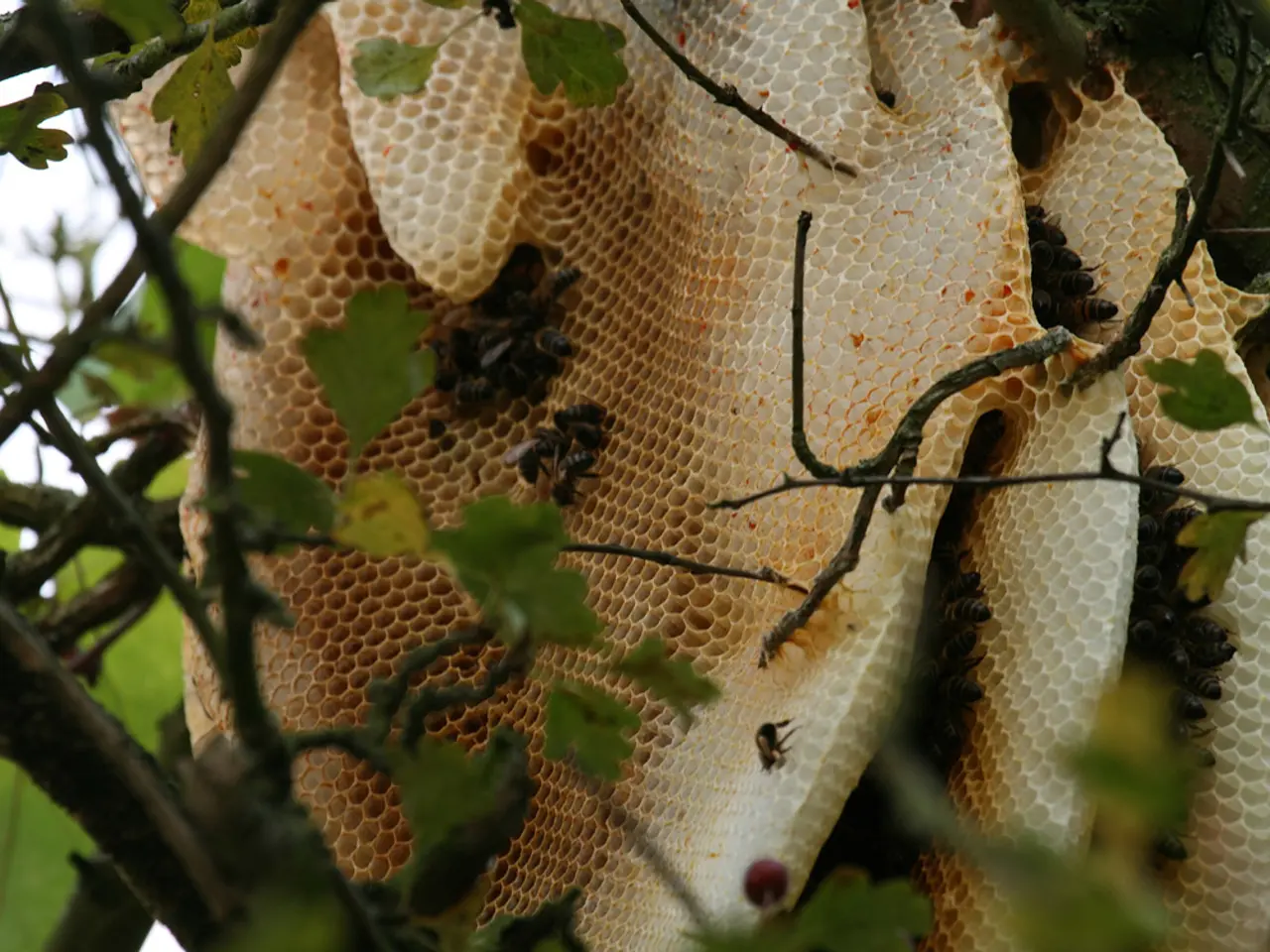Wild bee extinctions mount, stirring controversy over the Ministry's actions - Wild bee extinction crisis met with criticism towards the Ministry: 43 species have vanished, prompting concerns.
In the picturesque landscapes of Thuringia, Germany, conservation efforts are underway to support the dwindling wild bee populations. The red-red-green coalition that ruled Thuringia until 2024 initiated a continuation of the Thuringian biodiversity strategy, with a focus on planting native, drought-resistant, and diverse floral species.
These initiatives aim to create thriving habitats for wild bees and other insects, particularly in the face of climate change impacts such as heat waves, droughts, and heavy rainfall. Recommended plants for dry, sunny locations include meadow sage, oregano, knapweed, and viper's bugloss, while purple loosestrife and meadowsweet are suited for moist conditions. Deep-rooted plants like mullein and thistles are especially beneficial as they help prevent erosion and support wild bee habitats.
However, these conservation efforts face significant challenges. Extreme weather patterns caused by climate change, such as alternating wet and dry periods, heat spells that dry out plants, and heavy rains that cause soil erosion and root rot, threaten plant and insect food sources critical for wild bees’ survival.
The Left party faction has criticised the state government for suspending the works on the Thuringian strategy for biological diversity. Jens Thomas, the environmental politician of the Left state parliamentary faction, voiced his concerns, stating that the government's inaction could have detrimental effects on Thuringia's wild bee populations.
Despite the suspension, it's important to note that regional biodiversity projects exist in Thuringia. For instance, the Wildkatzensprung project, funded by the Federal Biological Diversity Programme, aimed at creating green corridors and documenting population genetics for wildcats in the Greiz region. Completed in 2017, this project was one of the largest citizen science efforts in Europe, indicating active biodiversity projects at the regional level.
The development of a regulation aimed at restoring damaged ecosystems is currently a priority in Thuringia, in accordance with EU directives. The regulation is set to be in place by the end of 2026.
The Nature Conservation Union (NABU) has recommended creating natural gardens, flower meadows, and wild corners on one's property to promote diversity of flowers and structures. They advise against cutting back or mowing flowers and greenery in gardens, parks, and along field and road edges, as this negatively impacts bees and other insects.
Sadly, 43 wild bee species have already gone extinct or disappeared in Thuringia, and more than half of the wild bee species are at risk. The situation of wild bees in Thuringia is alarming, according to NABU.
As of now, there is no detailed direct information on the current status of the Thuringian biodiversity strategy specifically. However, ongoing regional biodiversity projects and the impending regulation aimed at restoring damaged ecosystems offer hope for the future of Thuringia's wild bees.
- The conservation efforts in Thuringia's landscapes extended beyond wild bee populations, encompassing environmental protection via the planting of native, drought-resistant, and diverse floral species, in alignment with environmental science and policy-and-legislation.
- Amid ongoing climate change challenges, including extreme weather patterns that threaten plant and insect food sources, the Left party faction has pointed out the government's inaction on the Thuringian strategy for biological diversity as a potential obstacle, emphasizing its significance for general news and the environment.
- As part of the broader strategy for environmental protection, organizations like the Nature Conservation Union (NABU) encourage homeowners to establish natural gardens, flower meadows, and wild corners on their property to support the diversity of flowers and structures beneficial for bees and other insects, embodying the spirit of science, community aid, and policy-and-legislation towards a healthier environment.







